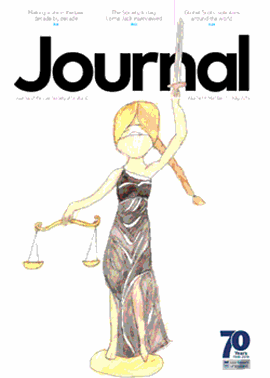
The Equality Bill became the Equality Act in April 2010, although much of the Act will be implemented from October 2010. We await the Government’s detailed implementation timetable.
As we have commented before, the Act harmonises discrimination law yet also brings in new concepts intended to strengthen the existing provisions. While being no substitute for the hundreds of pages of the Act and its official guidance, here is an outline of some of the new concepts which employers and advisers should look out for.
Perceptions matter
As a reminder, there are now nine “protected characteristics”, being age, disability, gender reassignment, marriage and civil partnership, pregnancy and maternity, race, religion or belief, sex, and sexual orientation.
Individuals will be able to bring claims (including harassment) based on association or perception based on all but one of the protected characteristics – marriage and civil partnership. For example, if there is a perception that someone attending for interview is pregnant, when she is not, and she is not given the job as a result, this could form the basis of a direct discrimination claim.
Combined discrimination is a new concept involving two protected characteristics where it is the unique combination of characteristics that results in discrimination, in such a way that they are completely inseparable: suppose, for example, a DIY retailer does not shortlist a young woman for interview believing she is unlikely to give the impression of having the necessary knowledge. The other staff are mostly older men, with some older women and some younger men. The reason for the less favourable treatment would appear to be a combination of the applicant’s sex and age.
Discrimination arising from disability – the new definition provides that it is discrimination to treat a disabled person unfavourably not just because of the person’s disability itself, but because of something arising from, or in consequence of, his or her disability, such as the need to take a period of disability-related absence.
Beware the public
Employers whose staff face the public should be aware of the new provisions on third-party harassment – an employee who complains on two occasions that he/she has been harassed on any of the grounds may complain to the tribunal on the third occasion (even where different third parties have been involved), if the employer has not taken “reasonable steps” to protect the employee. Note that rather than “such steps as were reasonably practicable”, an employer will in future have to show that they took “all reasonable steps” to prevent the discriminatory conduct.
Positive action is to be permitted, which essentially amounts to a limited form of tie-break for recruitment and promotion purposes if there is a candidate who falls within a protected characteristic category and one who does not.
It is important to note that does not mean the end is nigh for white men, contrary to press reports(!).
Regarding contractual confidentiality, the Act contains a clause designed to protect people who discuss their pay with colleagues with a view to finding out whether differences exist that are related to a protected characteristic (not just sex).
Finally, in relation to victimisation, the claimant will have to show that s/he has been subjected to a detriment because s/he has done or intends to do a protected act, but there will be no need to point to a comparator.
Fresh look
Employers would be advised to review their equal opportunities policies to check that they will cover the new concepts and, just as importantly, that they ensure all staff are aware of the policies and that appropriate training takes place to ensure compliance, in order to manage effectively the risk of expensive, damaging and very time-consuming discrimination complaints.
- Jane Fraser, Head of Employment, Pensions and Benefits, Maclay Murray & Spens; convener, Employment Law Specialist Panel
In this issue
- From Cadder to Calman via Constitution
- We can make the bill work
- The Cadder effect
- Bio Quarter: a case study
- Budgets of many colours
- Been there, done that
- Gill and the consumer
- Smoothing the path
- Net yourself a baby
- What's in a name?
- Inspiring change
- Further work in hand on constitution
- Faculty support on the agenda
- PCC's first year of "unsatisfactory" complaints
- From the Brussels office
- Learning in context
- Paper, pixel and process
- Growing cloud
- Ask Ash
- PQE: Post Qualification Equality?
- Technology to the rescue?
- "Definitive" approach
- Threat, or opportunity?
- Equality for all?
- Time to take a stand?
- A burden discharged
- The promise of certainty?
- A future for crofting
- Final tally
- Website review
- Book reviews
- An easy way to give?
- Three cheers for iPad







